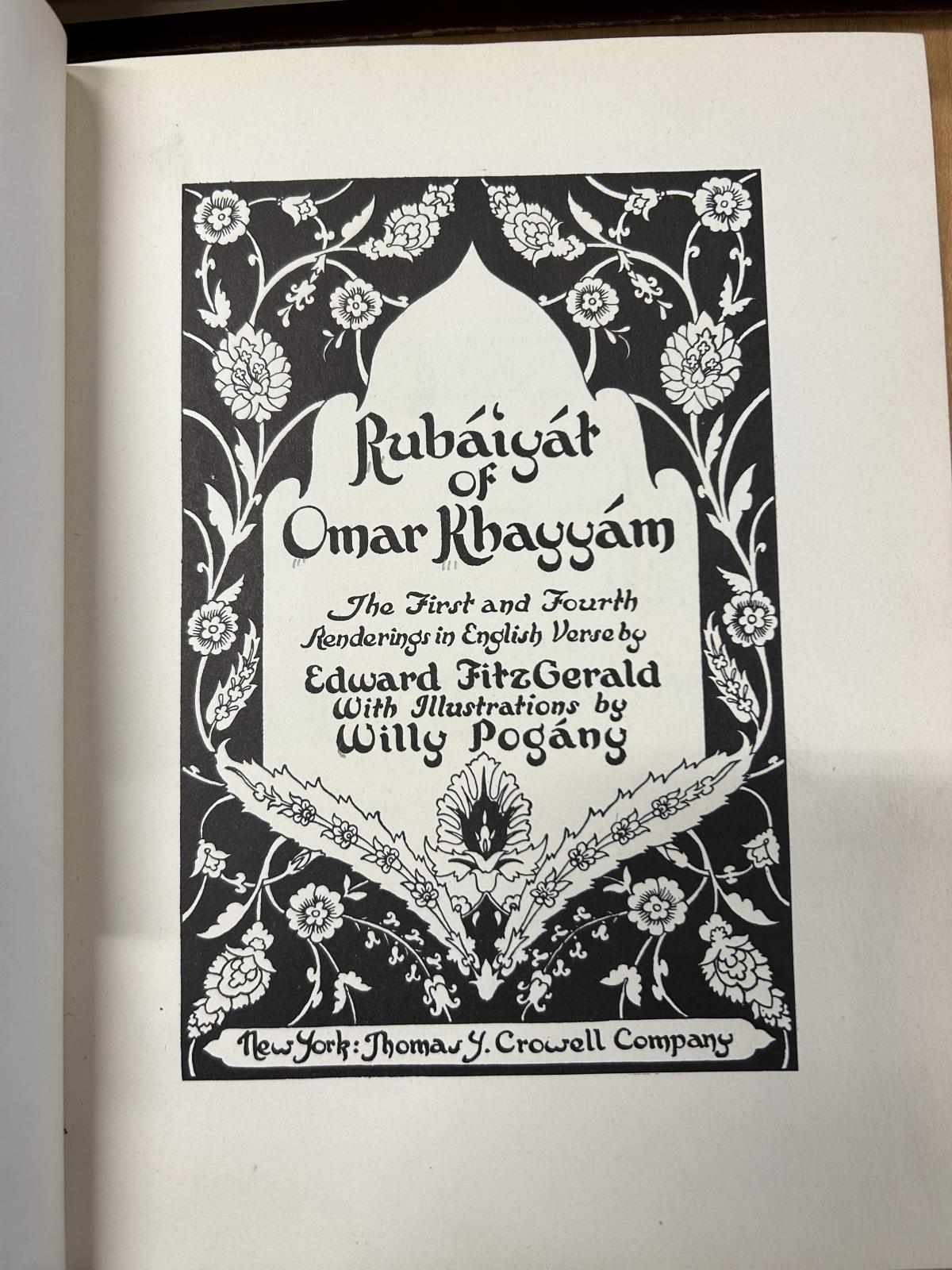The Thomas Y. Crowell edition of The Rhubáiyát of Omar Khayyám is not an edition that is subversive or remastered, but instead is a beautiful piece of print that embraces the aesthetics and value of its predecessors. A book with a simple yet effective binding, this harcover edition employs the use of a soft green buckram. It is a mellow background to the intricate embossment on both the front cover and along the spine, futher contrasted by the gilding it sports. The image is of a peacock erupting from a stylised vase, surrounded by flowering plants in a laurel-esque circle around it. In swirling lettering that mimics the swooping curves and tight spacing of the Arabic alphabet lies the title of the collection, Rubáiyát of Omar Khayyám. There is nothing else upon the cover, drawing attention only to the book's identity in a simple and concise manner. Along the spine is a more detailed description of this edition of the text, proclaiming the credit of the translations and illustrations to both Edward FitzGerald and Willy Pogány. On either side of the text are symmetrical ornaments.
The presence of the key elements being on the spine rather than the simple front and black back covers indicates the books importance as one of decoration, a staple upon a bookshelf. It is meant to be admired through its lovely exterior first, an eye catching ornament that pulls your attention. With the rubáiyát's long history as a gift book, it is likely that this is why the rather uncommon focal point of the text was chosen. As a gift, it is likely to be on display as a reminder of the sentimental value the text provides, a reminder to the gifted of its personal meaning. In its lack of flashiness, it reveals intimacy. This particular copy of this edition is in remarkable shape considering its near century long existence. The cover is in relatively good quality, no remarkable stains, tears, or marks, bear a few small discolorations upon the back. However, this lack of annotation or signs of wear and tear should not be taken as a book that was not cared for. The spine is in good condition and the glue is still intact, but it is well worn. Each page turns smoothly with the imprint of many flip throughs. The only marks along the interior are graphite smudges of past fingerprints, each where my own hand rested as I turned the pages, discolored into a soft cream.
This edition stands out most through its use of two of FitzGerald's translations, the first and fourth editions, pressed into 98 pages. Many of the ornaments stay the same and roughly line up between the two texts, and there is no acknowledgement of the differences between the two, simply a presentation of them juxtaposed one after the other. It is a visually stunning piece, with richly saturated ornaments of monotone plants and flowers. Ornaments that run along the sides of pages stand in confined spaces, echoing the shapes or stained glass windows or mosaics. Many of the quatrains are accompanied by prints of Pogány's illustrations, often inspired by the stanzas they are set against. Every so often there is a lone illustration in full color on its own page, seemingly glued in, although the adhesive has lost its efficacy over time, with many of the chromatic illustrations unstuck along the edges. With high saturations and rich vibrancy, the illustrations contribute to the 'drunk on life' tone of many of Khayyám's works, rich and full of life.




